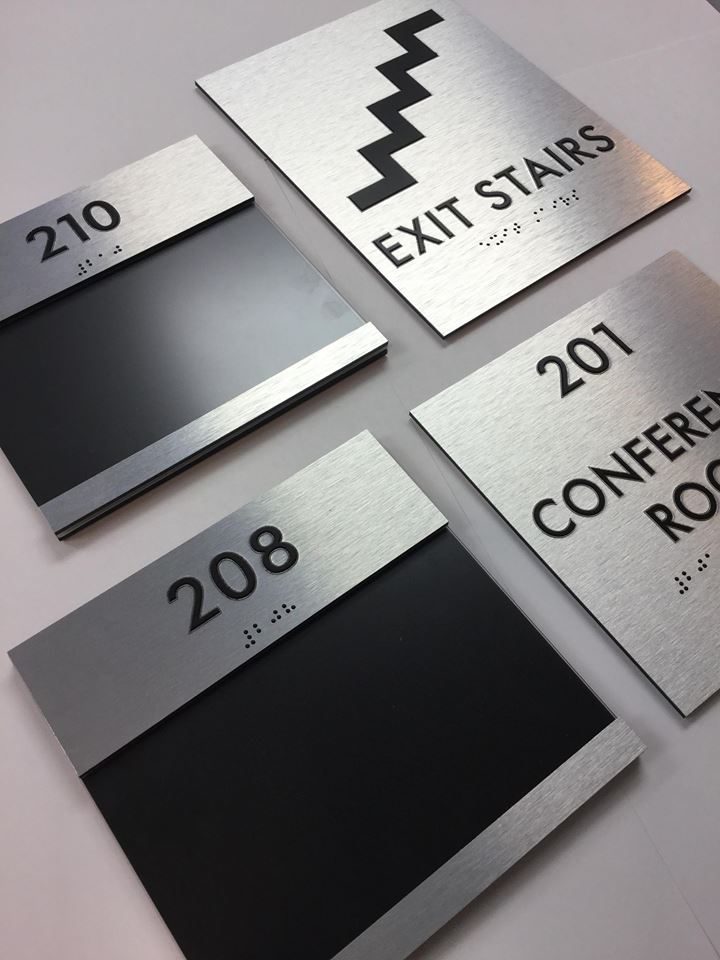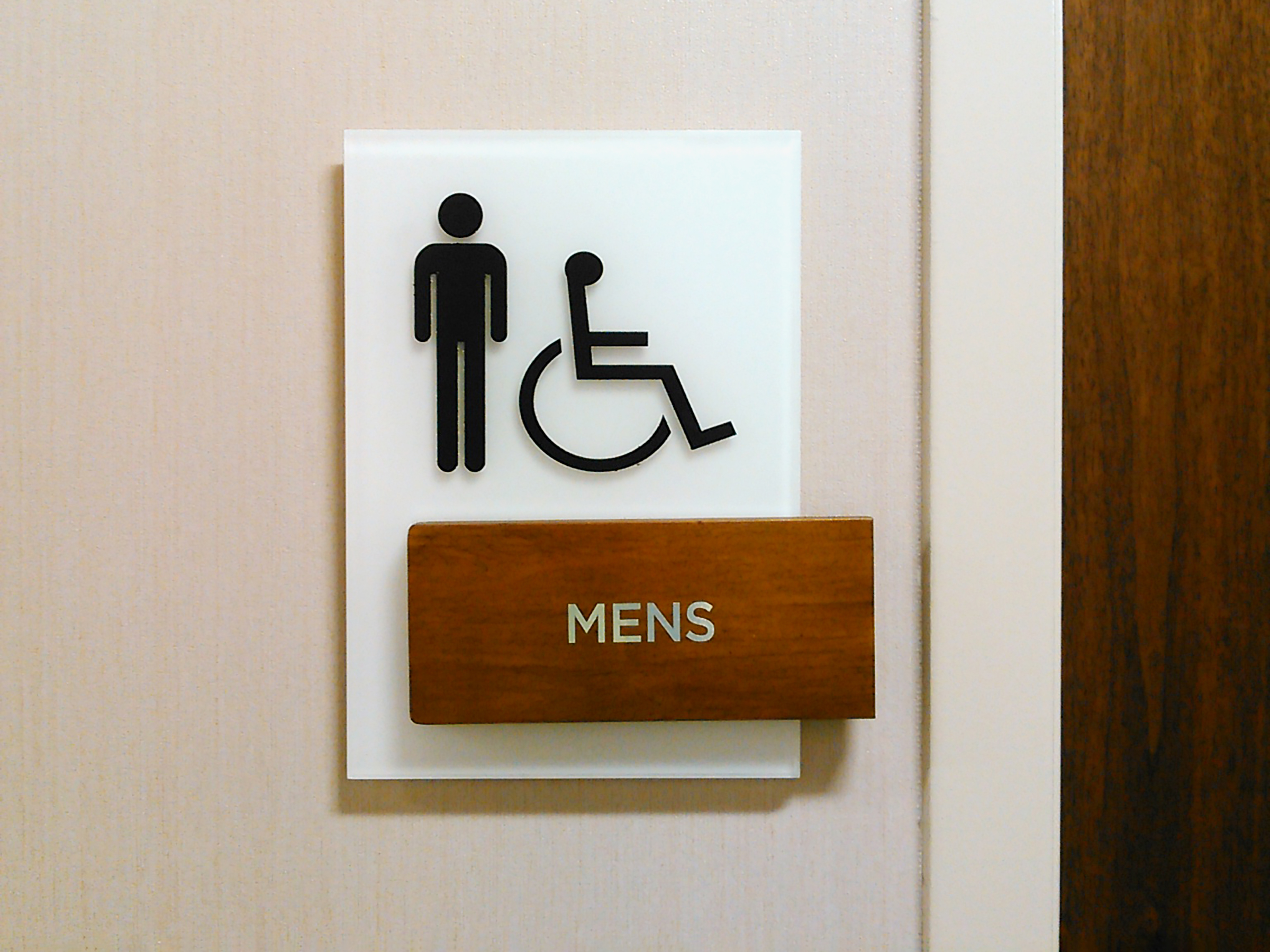ADA Signs: Vital Tools for Inclusive Atmospheres
ADA Signs: Vital Tools for Inclusive Atmospheres
Blog Article
Discovering the Trick Features of ADA Indications for Boosted Ease Of Access
In the world of access, ADA signs work as quiet yet effective allies, guaranteeing that spaces are comprehensive and navigable for people with impairments. By integrating Braille and tactile elements, these indicators damage barriers for the aesthetically damaged, while high-contrast color pattern and understandable font styles deal with varied aesthetic needs. Furthermore, their tactical positioning is not arbitrary but instead a calculated initiative to assist in seamless navigating. Yet, beyond these features lies a much deeper narrative about the advancement of inclusivity and the continuous commitment to producing equitable areas. What much more could these signs indicate in our pursuit of global availability?
Significance of ADA Conformity
Making certain compliance with the Americans with Disabilities Act (ADA) is important for fostering inclusivity and equal accessibility in public areas and workplaces. The ADA, passed in 1990, mandates that all public centers, employers, and transport services fit people with specials needs, ensuring they enjoy the same rights and possibilities as others. Compliance with ADA requirements not just satisfies lawful commitments but likewise improves a company's track record by showing its dedication to variety and inclusivity.
Among the vital aspects of ADA conformity is the implementation of available signage. ADA indications are created to make certain that people with handicaps can conveniently browse via buildings and spaces. These indicators should follow certain standards relating to dimension, font style, color contrast, and positioning to assure exposure and readability for all. Properly executed ADA signage assists get rid of barriers that people with impairments commonly experience, thus promoting their independence and confidence (ADA Signs).
In addition, sticking to ADA policies can mitigate the threat of legal effects and prospective fines. Organizations that fall short to conform with ADA standards might face penalties or legal actions, which can be both harmful and monetarily difficult to their public photo. Therefore, ADA conformity is essential to cultivating an equitable setting for everyone.
Braille and Tactile Components
The consolidation of Braille and responsive components right into ADA signage embodies the concepts of accessibility and inclusivity. It is usually positioned under the equivalent text on signage to ensure that individuals can access the information without visual support.
Tactile aspects prolong beyond Braille and include elevated personalities and icons. These elements are developed to be discernible by touch, allowing people to determine space numbers, washrooms, exits, and other critical locations. The ADA establishes particular guidelines regarding the dimension, spacing, and positioning of these tactile elements to maximize readability and make sure consistency across various settings.

High-Contrast Shade Schemes
High-contrast color pattern play a crucial role in boosting the visibility and readability of ADA signage for people with visual impairments. These plans are vital as they make best use of the difference in light reflectance in between text and history, guaranteeing that indicators are quickly noticeable, even from a range. The Americans with Disabilities Act (ADA) mandates using details color contrasts to suit those with restricted vision, making it a crucial facet of compliance.
The effectiveness of high-contrast colors hinges on their ability to attract attention in different lighting conditions, consisting of poorly lit environments and areas with glow. Usually, dark message on a light background or light text on a dark history is used to achieve optimal comparison. For example, black text on a white or yellow history gives a stark aesthetic distinction that aids in quick acknowledgment and understanding.

Legible Fonts and Text Dimension
When considering the design of ADA signage, the option of legible fonts and suitable text size can not be overemphasized. These aspects are essential for making sure that indications are obtainable to view people with aesthetic problems. The Americans with Disabilities Act (ADA) mandates that fonts must be sans-serif and not italic, oblique, script, highly decorative, or of unusual form. These requirements help guarantee that the text is easily readable from a range which the personalities are distinct to diverse audiences.
According to ADA standards, the minimum text elevation ought to be 5/8 inch, and it should boost proportionally with seeing range. Consistency in message size adds to a cohesive aesthetic experience, helping individuals in browsing environments successfully.
Furthermore, spacing in between lines and letters is important to clarity. Sufficient spacing avoids personalities from appearing crowded, enhancing readability. By sticking to these requirements, designers can substantially enhance availability, making sure that signage offers its intended purpose for all people, regardless of visit our website their visual capacities.
Effective Placement Approaches
Strategic positioning of ADA signs is essential for taking full advantage of availability and making sure compliance with legal standards. ADA standards state that indications should be mounted at an elevation between 48 to 60 inches from the ground to ensure they are within the line of view for both standing and seated people.
Furthermore, indications should be placed beside the lock side of doors to allow easy recognition before entry. This positioning assists individuals locate rooms and rooms without blockage. In cases where there is no door, signs need to be located on the closest surrounding wall. Consistency in sign positioning throughout a facility improves predictability, decreasing complication and enhancing overall my blog customer experience.

Conclusion
ADA indicators play a crucial role in advertising ease of access by incorporating attributes that address the requirements of people with handicaps. Incorporating Braille and tactile aspects makes certain crucial info is obtainable to the visually impaired, while high-contrast color design and understandable sans-serif fonts enhance exposure throughout numerous lights conditions. Effective placement methods, such as ideal mounting elevations and calculated places, additionally promote navigating. These elements collectively foster an inclusive environment, underscoring the value of ADA conformity in ensuring equal access for all.
In the realm of ease of access, ADA indicators offer as quiet yet effective allies, guaranteeing that rooms are comprehensive and navigable for people with disabilities. The ADA, passed in 1990, mandates that all public centers, employers, and transport services accommodate individuals with specials needs, ensuring they take pleasure in the same rights and possibilities as others. ADA Signs. ADA indications are designed to make certain that people with disabilities can conveniently navigate through rooms and structures. ADA guidelines specify that indications should be placed at a height in between 48 to 60 inches from the ground to guarantee they are within the line of sight for both standing and seated people.ADA signs play an essential duty in promoting accessibility by incorporating attributes that deal with the needs of people with specials needs
Report this page